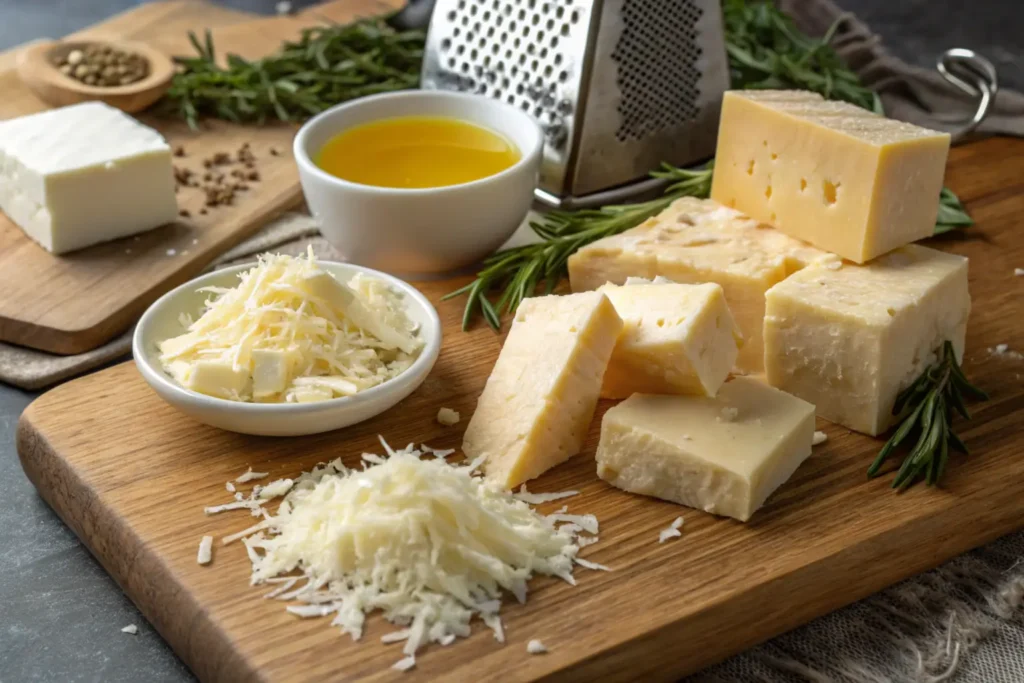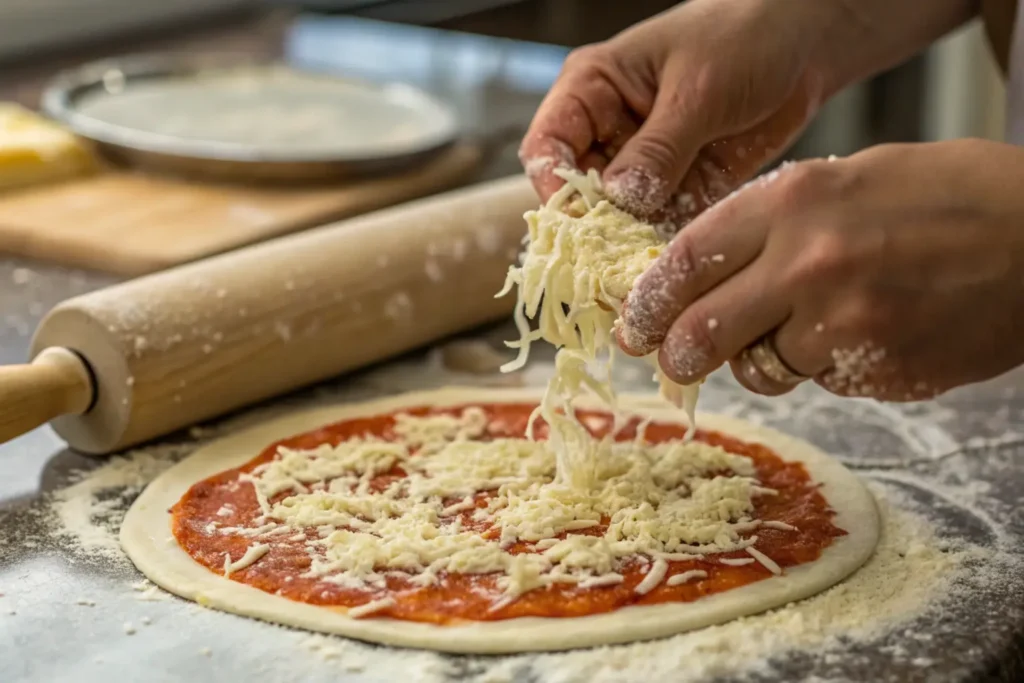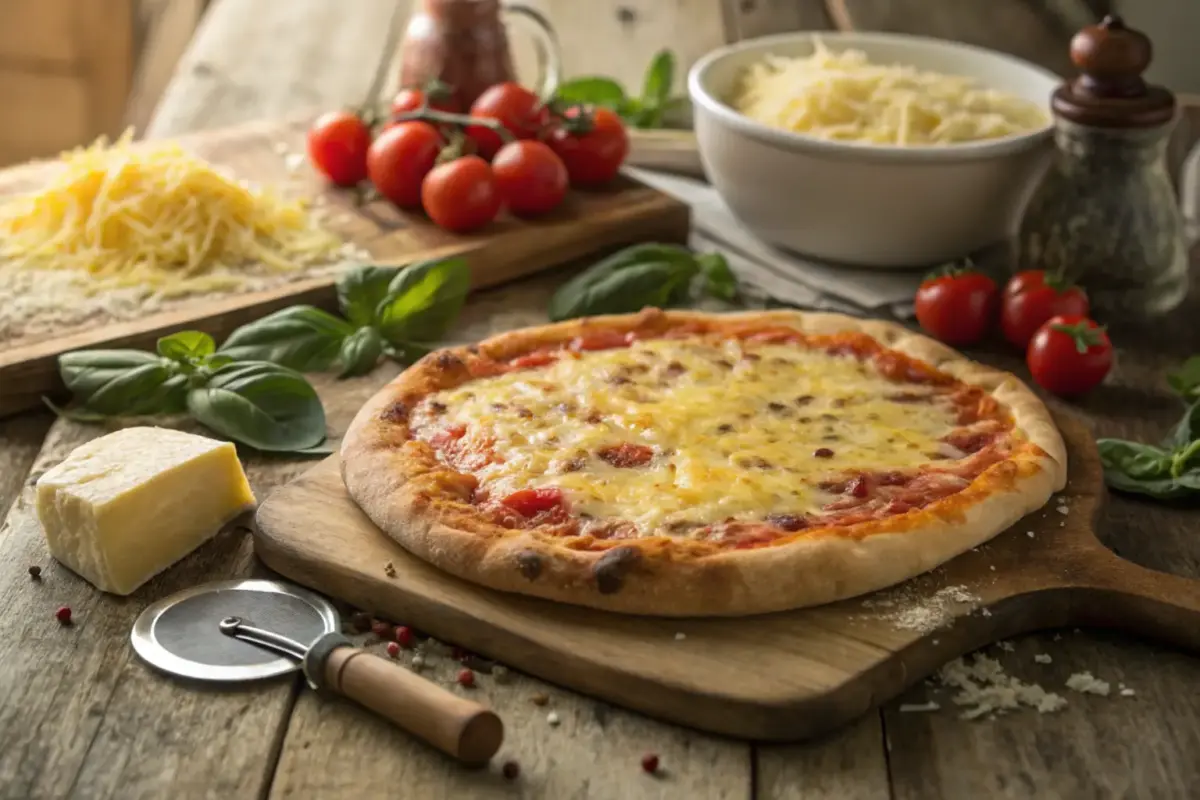Introduction
Let’s face it, pizza is already pretty much the best thing ever. But when you think about the crust—oh man, that’s where things can get next-level. Adding cheese to the crust? Now we’re talking! Whether you’re making a stuffed crust or sprinkling some cheese along the edges, the type of cheese you choose can make or break the whole vibe. Can cottage cheese be used on pizza? explores unique cheese options for unconventional pizzas that might inspire your next creation.
Understanding the Role of Cheese in Pizza Crusts
Why Cheese Enhances Pizza Crusts
You know how pizza crust is usually the part people leave behind (except for those true bread lovers)? Well, cheese flips that script entirely. The gooey, melty texture and the savory flavor of cheese transform the crust into the star of the show. It’s not just about making the crust tastier—it’s about creating an experience where every bite feels complete. Whether it’s that satisfying stretch of mozzarella or the nutty tang of Parmesan, cheese brings life to an otherwise plain crust. For a healthier twist on crusts, you might want to check out what is the healthiest crust for pizza.
Characteristics of the Perfect Cheese for Crusts
When picking cheese for your pizza crust, you want to focus on a few key traits. First up is meltability. A good cheese should melt evenly and smoothly—nobody wants clumps of half-melted cheese. Next, it’s all about the flavor. The cheese should complement your pizza toppings without overpowering them. And let’s not forget texture. Whether you’re going for oozy and stretchy or crispy and caramelized, the texture of the cheese can totally change the game.
Key Factors in Selecting Cheese for Pizza Crust
Meltability and Texture
Let’s talk science for a second. Meltability is all about how the cheese reacts to heat. Mozzarella, for example, is famous for its perfect melt. It gets that smooth, stringy texture that’s so satisfying to pull apart. Cheeses like Parmesan, on the other hand, don’t melt as easily but can crisp up beautifully. Think about the texture you’re aiming for in your crust and pick a cheese that matches that goal.
Flavor Profile and Pairings
Every cheese brings its own personality to the table. Mozzarella keeps it mild and creamy, making it a safe bet for pretty much any pizza. Parmesan? That’s your guy for adding a nutty, slightly sharp kick. If you’re feeling bold, a cheese like cheddar can give your crust a tangy edge. The key is to think about how the crust will play with the rest of the pizza. Are you going for classic pepperoni? Maybe stick with mozzarella. Trying something wild like BBQ chicken? Cheddar might be your move.
Stretchiness and Visual Appeal
Okay, let’s be real—half the fun of cheesy pizza is watching those stretchy strings when you pull a slice apart. Some cheeses, like mozzarella, are famous for their stretchiness, while others are more about flavor than visual drama. But if you want your crust to look as good as it tastes, choosing a cheese that melts into golden perfection (without burning) is key. A little sprinkle of Parmesan or even a touch of Asiago on the edges can give your crust that Instagram-worthy finish.
Popular Cheeses for Pizza Crusts

Mozzarella: The Classic Choice
Mozzarella is the king of pizza cheeses, and it’s not just for the toppings. When it comes to crusts, mozzarella checks all the boxes. It melts beautifully, has a mild flavor that goes with almost anything, and gives you that iconic stretchiness we all love. If you’re going for a stuffed crust, mozzarella is a no-brainer. The way it melts into the dough creates a soft, gooey pocket of cheesy perfection that’s impossible to resist.
Parmesan: Adding a Nutty Depth
If you’re looking for a cheese that brings a little sophistication to your pizza crust, Parmesan is your best friend. It doesn’t melt as much as mozzarella, but that’s actually a good thing. Sprinkling grated Parmesan along the crust gives you a crispy, golden edge with a nutty flavor that pairs beautifully with rich tomato sauce or fresh basil. Plus, it’s a fantastic way to add a savory kick without overpowering the rest of your pizza.
Cheddar: Bold and Tangy
Cheddar might not be the first cheese you think of for pizza, but trust me, it’s worth trying. Its bold, tangy flavor brings a unique twist to your crust, especially if you’re working with non-traditional toppings like BBQ chicken or spicy sausage. Cheddar melts well and can create those golden, crispy edges that make your crust stand out. It’s a great choice for anyone who wants their pizza to have a little extra personality.
Specialty Cheese Options
Goat Cheese: A Unique Twist
Goat cheese might not be the most conventional choice for pizza crust, but that’s exactly why it’s so fun to experiment with. Its creamy texture and tangy flavor can take your pizza crust to gourmet levels. Pair it with toppings like caramelized onions or roasted red peppers, and you’ve got a flavor combo that’ll make people think you ordered from a fancy pizzeria. Cottage cheese pizza crust also provides a surprising alternative if you’re looking to blend health and flavor.
Fontina: Creamy and Rich
Fontina is a lesser-known gem in the cheese world, but it deserves a spot on your pizza crust lineup. It’s creamy, rich, and melts like a dream. This cheese has a slightly nutty, buttery flavor that pairs beautifully with herbs like thyme or rosemary. Fontina is a great option if you want a cheese that feels indulgent without being too overpowering. It works especially well for white pizzas or crusts topped with earthy ingredients like mushrooms.
Provolone: Balanced and Versatile
Provolone is the ultimate middle-ground cheese. It’s got a smooth, slightly sharp flavor that works well with a variety of toppings. For pizza crusts, provolone brings a creamy melt and a golden finish that’s hard to beat. If you’re mixing cheeses for your crust, provolone is a fantastic team player—it blends beautifully with mozzarella and Parmesan for a balanced flavor that doesn’t steal the spotlight but still shines.
Combining Cheeses for a Custom Crust Experience
Blending Cheese for Texture
Let’s talk textures. When it comes to creating the perfect cheese-crust pizza, mixing different cheeses can work magic. Mozzarella is stretchy and gooey, while Parmesan adds a satisfying crunch. Blend them together, and you’ve got a crust that’s both soft and crispy. If you’re a fan of stuffed crust, try combining mozzarella with a little cream cheese for extra creaminess. For those who love a bit of bite, adding cheddar can give your crust that sharp, tangy finish. Mixing cheeses isn’t just fun—it’s the secret to nailing that just-right texture.
Mixing Flavors for a Complex Profile
Here’s the deal: your pizza crust doesn’t have to be boring. Mixing cheeses with distinct flavors can create something truly special. Pair mild, creamy cheeses like mozzarella or provolone with something bold, like goat cheese or blue cheese, for a crust that stands out. Love a rich, buttery vibe? Try fontina mixed with Parmesan for a flavor that’s indulgent without going overboard. The key is balance—let the flavors complement each other without overpowering the rest of the pizza.
Tips for Using Cheese in Pizza Crust

Preventing Overbaking or Scorching
Let’s be honest—burnt cheese is nobody’s favorite. If you’re not careful, your cheesy crust can go from golden perfection to a charred mess. To avoid this, pay attention to your oven temperature. High-heat cheeses like Parmesan or cheddar can scorch if left too long. A good trick is to add them later in the baking process, giving them just enough time to melt and brown. For stuffed crusts, seal the edges of the dough tightly to keep the cheese from leaking out and burning on the pan. A little extra care here goes a long way in keeping your crust picture-perfect.
Layering Cheese for Even Coverage
Even coverage is everything when it comes to layering cheese on your crust. Nobody wants one side overflowing with gooey goodness while the other is bone-dry. For stuffed crusts, use evenly sized strips or shredded cheese along the edges before folding the dough over. For sprinkled crusts, spread the cheese evenly across the edges so it melts into a uniform, golden layer. Pro tip: shredded cheese works better than chunks—it melts faster and spreads more evenly. This simple step makes all the difference in achieving that flawless finish.
FAQs
What is the best cheese to use when making pizza?
Mozzarella is hands-down the best cheese for pizza. It melts perfectly, stretches beautifully, and has a mild flavor that complements all kinds of toppings. Want a flavor boost? Add Parmesan for a nutty kick or provolone for a touch of sharpness.
Which cheese is used in pizza crust?
Mozzarella is the most popular choice for pizza crust, thanks to its gooey texture and mild taste. For a crispy edge, Parmesan is a great option. Some adventurous cooks even mix in cream cheese or ricotta for stuffed crusts to create a creamy, rich experience.
What cheese do NY pizzerias use?
New York pizzerias almost always go for whole-milk mozzarella. It’s creamy, stretchy, and melts like a dream, giving NY-style pizzas their signature texture. Many pizzerias also sprinkle a little Parmesan or Romano on top for extra flavor, but mozzarella is the star.
Which cheese spread is best for pizza?
When it comes to cheese spreads, cream cheese and ricotta are top picks. Both have a smooth, creamy texture that works beautifully in stuffed crusts or as a layer between the sauce and toppings. Ricotta is lighter and slightly sweet, while cream cheese adds richness, making either a perfect addition to your pizza.
Conclusion
Cheese isn’t just a topping—it’s the heart of an amazing pizza crust. Whether you’re sticking with classic mozzarella, experimenting with bold flavors like cheddar or goat cheese, or blending multiple types for the perfect balance, the possibilities are endless. By choosing the right cheeses, mixing them thoughtfully, and baking with care, you can transform your pizza crust into something unforgettable. So grab your cheese, roll out that dough, and get ready to wow everyone with a pizza that’s as fun to make as it is to eat.


2 thoughts on “What Is the Best Cheese for Pizza Crust? Expert Advice You Need”